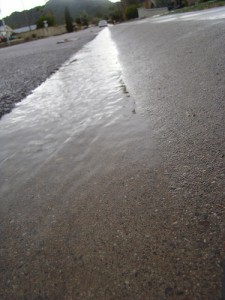
The Ohio DNR, soil and water groups have hired three educators to increase nonpoint source pollution awareness. Photo: vedved82491 via Flickr.
Runoff from urban and agricultural activities has a bad rap–a recent white paper said nonpoint source pollution accounts for 76 percent of Great Lakes water pollution.
The Ohio Department of Natural Resources said nonpoint pollution can range from “lawn chemicals, fertilizers, road salts and petroleum products to sediment (dirt) and excessive nutrients from cities, malfunctioning home-sewage treatment systems and livestock operations.”
Ohio is taking the problem into its own hands to clean up Lake Erie. But how do you attack the source when you don’t know where it is?
An easy answer: educate the humans.
The Ohio Department of Natural Resources granted $75,000 toward three coastal nonpoint pollution education specialists in Lake, Lucas and Ottawa counties. Local soil and water conservation districts along with the Division of Soil and Water Resources chipped in to match funds.
The educators will target individual, agricultural and lakeshore residents and recreators’ actions.
Education specialists will teach the public about local runoff issues and ways they can prevent nonpoint pollution from entering the Lake Erie watershed through programs and outreach activities.
That means teaching farmers to better control sediment, fertilizers and other applications from entering the runoff stream or whipping residents into shape when maintaining lawns.
Learn more about the elusive nonpoint source pollution in the Great Lakes region from the Environmental Protection Agency.